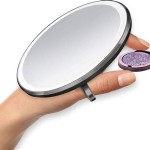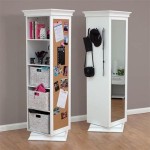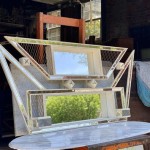How To Mirror Screen On iPhone
Screen mirroring allows users to display the content of their iPhone screens on larger displays like TVs and computer monitors. This functionality offers benefits for various activities, including presentations, entertainment sharing, and gaming. This article will explore the methods for mirroring an iPhone screen, outlining the necessary equipment and providing step-by-step instructions.
Using AirPlay with an Apple TV or AirPlay 2-Compatible Smart TV
AirPlay is Apple's proprietary wireless streaming technology, designed for seamless screen mirroring and media sharing between Apple devices and compatible TVs. For mirroring an iPhone screen using this method, an Apple TV or a smart TV with built-in AirPlay 2 support is required.
To initiate screen mirroring, ensure both the iPhone and the Apple TV or AirPlay 2-compatible TV are connected to the same Wi-Fi network. Then, open the Control Center on the iPhone by swiping down from the top right corner (on iPhone X or later) or swiping up from the bottom of the screen (on older models). Tap the "Screen Mirroring" icon. A list of available AirPlay devices will appear. Select the desired Apple TV or smart TV.
Once connected, the iPhone's screen will be mirrored on the television. The orientation and aspect ratio will adjust automatically. To stop mirroring, open the Control Center again, tap "Screen Mirroring," and then select "Stop Mirroring."
Mirroring to a Mac or PC with QuickTime Player
Users can also mirror their iPhone screens to a Mac or Windows computer using QuickTime Player. This method requires a USB cable to connect the iPhone to the computer.
First, connect the iPhone to the computer using a Lightning cable. Open QuickTime Player on the computer. In QuickTime Player's menu bar, click "File," then "New Movie Recording." A recording window will appear. Click the down arrow next to the record button. Select the connected iPhone as both the camera and microphone source. The iPhone's screen will then be displayed in the QuickTime Player window.
Utilizing Third-Party Screen Mirroring Apps
Numerous third-party apps offer screen mirroring functionality, often extending compatibility to devices that don't natively support AirPlay. These apps typically require both the iPhone and the receiving device (e.g., smart TV, streaming stick) to be connected to the same Wi-Fi network.
The specific setup process varies depending on the chosen app and receiving device. Users should consult the app's instructions for detailed guidance. Many such apps require the installation of a receiver application on the target device. Some third-party apps may offer additional features beyond basic screen mirroring, like recording capabilities or enhanced streaming quality.
Mirroring to a Chromecast Device
While iPhones don't natively support Chromecast mirroring in the same way as Android devices, several third-party apps enable this functionality. These apps bridge the gap between iOS and Chromecast, allowing users to mirror their iPhone screens to Chromecast-enabled devices.
Users will need to download a Chromecast-compatible mirroring app from the App Store. After installation, follow the in-app instructions to connect the iPhone and the Chromecast device to the same Wi-Fi network. The app will then facilitate the mirroring process. The specific steps and features may vary depending on the chosen app.
Mirroring for Presentations with Projectors
For presentations, iPhones can be mirrored to projectors that support wireless connections or have appropriate input ports. If the projector supports AirPlay, the mirroring process is identical to mirroring to an Apple TV. For projectors with VGA, HDMI, or other video inputs, adapters will be required.
Connecting an iPhone to a projector typically involves using a Lightning to HDMI adapter or a Lightning to VGA adapter. Connect the adapter to the iPhone's Lightning port and then connect the adapter to the projector using an appropriate cable. The projector should then display the iPhone's screen. Ensure that the projector is set to the correct input source.
Troubleshooting Screen Mirroring Issues
Occasionally, users may encounter issues with screen mirroring. Common problems include connection failures, lagging video, or audio sync issues. Several troubleshooting steps can address these issues.
First, ensure all devices are connected to the same Wi-Fi network and that the network is functioning properly. Restarting the iPhone and the receiving device can often resolve minor glitches. Checking for software updates on both devices is also recommended. If using an app for mirroring, ensure the app is up-to-date. If problems persist, consult the app's support documentation or the manufacturer's website for the receiving device.
Choosing the Right Mirroring Method
The optimal mirroring method depends on the user's specific needs and available equipment. AirPlay offers the most seamless experience for users with Apple TVs or AirPlay 2-compatible TVs. QuickTime Player provides a wired solution for mirroring to computers. Third-party apps offer broader device compatibility, while adapters enable connections to projectors and displays without wireless capabilities. Consider the specific requirements of the mirroring task to select the most suitable approach.

How To Mirror Iphone

Use Airplay To Stream Or Mirror The Screen Of Your Iphone Ipad Apple Support

How To Mirror Iphone Smart Tv The Simple Rundown

How To Use Apple Airplay Mirror Your Iphone Mac Screen On Tv Roku And More Cnet

How To Mirror Iphone Ipad Easily In 2024 Ultimate Guide

Use Airplay To Stream Or Mirror The Screen Of Your Iphone Ipad Apple Support

Detailed Guide Top 3 Ways To Mirror Ios 15 Tv

How To Mirror Iphone Windows Pc Laptop Mac Full Guide

How To Mirror Iphone Step By Guide

3 Ways To Mirror Iphone Tv Without Apple Istreamer








